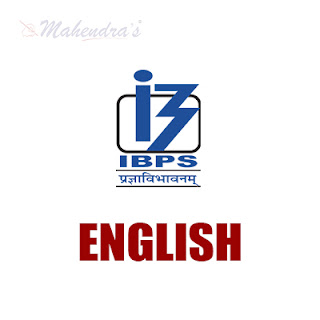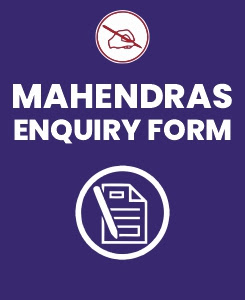
Read the following passage carefully and answer the questions given below it. Certain words are given in bold to help you locate them while answering some of the questions.
For the first time in its 56-year history, the Indus Waters Treaty (IWT) between India and Pakistan, often upheld around the world as a sterling example of cooperation in trans-boundary rivers, finds itself under unprecedented threat.
Bristling after the terror attack in Uri, India has initiated steps to use the IWT as a weapon to “punish” a recalcitrant Pakistan. “Blood and water cannot flow simultaneously,” Prime Minister has proclaimed. Pakistan, in turn, declared that the treaty’s revocation would be an “act of war”. Amid this war of words between New Delhi and Islamabad, India announced it was pulling out of the Saarc summit in Islamabad in November, with Afghanistan, Bangladesh and Bhutan following suit.
Using the Saarc lever to hit back at Pakistan is a step in the right direction. But India should not use the 1960 Indus waters sharing pact involving six trans-boundary rivers — Indus, Jhelum, Chenab, Sutlej, Beas and Ravi — as a “strategic” weapon against Pakistan. It must press ahead with other options, including diplomatic ones, to convey to Islamabad that it cannot be business as usual until it puts a stop to terror attacks emanating from its soil.
During the 1965 Indo-Pak war, India did not disrupt water supply to Pakistan even as Indian forces were taking on Pakistani Patton tanks during the famous battle of Assal Uttar in Punjab where canals carrying the water crisscrossed the State.
Under the IWT, India gets to use merely 20 per cent of the water from the Indus basin despite contributing 90 per cent of the water to the system; Pakistan, on the other hand, makes use of 80 per cent of the water while contributing a mere 10 per cent.
The decision by India to suspend meetings of the Permanent Indus Commission — it meets twice a year and oversees the implementation of the treaty besides serving as a dispute redress mechanism — until the atmosphere is terror-free, is fraught with consequences not just for Pakistan but India, too.
In the immediate future, this step will have a debilitating impact on the treaty since it means the Indus water commissioners — one each from India and Pakistan — will no longer meet to exchange vital information, data or resolve disputes. Further, India risks internationalising the issue, with Pakistan certain to knock on the doors of the International Court of Arbitration at The Hague accusing India of violating the treaty.
Turning off the tap for Pakistan will not only mean making the ordinary Pakistani pay for the sins of its government but also diminish India’s standing as a responsible nation fit to sit at the global high table. It will, of course, also give a handle to extremist elements in Pakistan to fan anti-India sentiments, and carry out more terror attacks on Indian territory.
Furthermore, much as the diversion of river waters may seem like an appropriate tit-for-tat, these steps are easier said than taken. For, to effectively block or divert waters upstream in the western rivers would require a network of dams, barrages and canals which could take years to construct.
Blocking or diverting water meant for Pakistan will also mean flooding in J&K and Punjab in the absence of adequate infrastructure there to direct the excess water flow elsewhere. Moreover, in the event of a conflict, Pakistani jets could well bomb the Bhakra Nangal dam in retaliation.
It will not help India’s case in the neighbourhood as countries such as China and Nepal could well see it as a precedent and indulge in some muscle-flexing of their own by virtue of being the upper riparian states for rivers flowing into India. The Brahmaputra flows into India from China, while the Kosi and Ghagra flow in from Nepal.
Seeking the international isolation of Pakistan is the most effective card for India. Apart from Saarc, New Delhi has also been leveraging two other regional groupings, Bimstec (Bay of Bengal Initiative for Multi-Sectoral Technical and Economic Cooperation) and BBIN (Bangladesh, Bhutan, India and Nepal), to isolate its western neighbour. As India battles a country that is “host to the Ivy League of terrorism”, it would do well to stick to the stratagem of seeking Pakistan’s diplomatic isolation. Remember that unlike its neighbour, it has a reputation to uphold in the international arena. And violating the IWT, which oversees an emotive issue like water, could leave it severely bruised.
Q.1- What percentage of water dose India and Pakistan get to use from Indus basin?
(1) India uses 40 per cent of the water despite contributing 80 per cent; Pakistan, on the other hand, uses 60 per cent of the water while contributing a mere 30 per cent.
(2) India gets to use 90 per cent of the water contributing 10 per cent of the water to the system; Pakistan, on the other hand, makes use of 10 per cent of the water while contributing a mere 80 per cent.
(3) India uses 20 per cent of the water despite contributing 50 per cent of the water while Pakistan uses of 60 per cent of the water while contributing 15 per cent.
(4) India gets to use merely 20 per cent of the water from the Indus basin despite contributing 90 per cent of the water to the system; Pakistan, on the other hand, makes use of 80 per cent of the water while contributing a mere 10 per cent.
(5) India uses only 10 per cent of the water contributing 60 per cent while Pakistan uses of per cent of the water while contributing a mere 70 per cent.
EXPLANATION- Answer lies in the 6th paragraph.
Q.2- When did India not disrupt water supply to Pakistan?
(1) 1945
(2) 1918
(3) 1856
(4) During the 1965 Indo-Pak war
(5) 1914
EXPLANATION- Answer lies in the 4th paragraph.
Q.3. Which of the following statement/s is/are NOT TRUE in context to the passage?
(1) New Delhi has also been leveraging two other regional groupings, Bimstec and BBIN to isolate its western neighbour.
(2) Much as the diversion of river waters may seem like an appropriate tit-for-tat.
(3) India disrupted water supply to Pakistan even as Indian forces were taking on Pakistani Patton tanks during the famous battle of Assal
(4) Using the Saarc lever to hit back at Pakistan is a step in the right direction.
(5) India has initiated steps to use the IWT as a weapon to “punish” a recalcitrant Pakistan.
EXPLANATION- Answer lies in the 4th paragraph.
Q.4. Which of the following statement/s is/are TRUE in context to the passage?
(1) Pakistani jets could not well bomb the Bhakra Nangal dam in retaliation.
(2) Turning off the tap for Pakistan will not only mean making the ordinary Pakistani pay for the sins of its government but also diminish India’s standing as a responsible nation fit to sit at the global high table.
(3) Prime Minister of India declared that the treaty’s revocation would be an “act of war”.
(4) As India battles a country that is “lost to the Ivy League of terrorism”
(5) To divert waters upstream in the western rivers would require only a network of dams and not anything else.
EXPLANATION- Answer lies in the 8th paragraph.
Q.5- Which of the following is possibly the most appropriate title for the passage?
(1) India and Pakistan
(2) world war
(3) Uri attack
(4) Indus Waters Treaty
(5) diversion of river
Q.6- Using the Saarc lever to hit back at Pakistan is
(1) to effectively block or divert waters
(2) to knock on the doors of the International Court
(3) a step in the right direction.
(4) to suspend meetings of the Permanent Indus Commission
(5) to the stratagem of seeking Pakistan’s diplomatic isolation.
EXPLANATION- Answer lies in the 3th paragraph.
Q.7-8. Choose the word/group of words is most SIMILAR in meaning to the word/group of words printed in bold as used in the passage.
Q.7- ISOLATION
(1) solution (2) combination (3) woodland (4) terrorism (5) Segregation
Q.8- RECALCITRANT
(1) Obedient (2) Stubborn (3) naughty (4) hungry (5) rude
Q.9-10. Choose the word/group of words is most OPPOSITE in meaning to the word/group of words printed in bold as used in the passage.
Q.9- REVOCATION
(1) Approval (2) Cancellation (3) Attention (4) Distribution (5) Repeal
Q.10- DELIBITATING
(1) demand (2) courage (3) Poor (4) Strengthen (5) deep
ANSWER
1. (4) 2. (4) 3. (3) 4. (2) 5. (4) 6. (3) 7. (5) 8. (2) 9. (2) 10. (4)





0 comments:
Post a Comment
MAHENDRA GURU